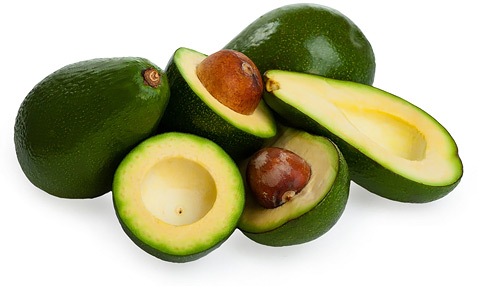Did You Know...
12/06/2011
Furci Home / Fitness Channel / Bullz-Eye Home
A column by Mike Furci that brings you research, trends and other info to help you with your fitness, health and nutritional needs.
 …everywhere you turn these days, resistance training seems to be in the spotlight? And why shouldn't it be? A proper resistance training program produces many positive effects, including: increased muscle mass; reduced body fat; increased bone density; improved insulin sensitivity; improved self-esteem; and overall improved well-being. The list goes on. Yet with all the information available, why is it so hard for people to make progress? Because most of what is out there is bullshit!
…everywhere you turn these days, resistance training seems to be in the spotlight? And why shouldn't it be? A proper resistance training program produces many positive effects, including: increased muscle mass; reduced body fat; increased bone density; improved insulin sensitivity; improved self-esteem; and overall improved well-being. The list goes on. Yet with all the information available, why is it so hard for people to make progress? Because most of what is out there is bullshit!
Helping people is what being a trainer and a coach is all about. Most publishers and editors are so hell-bent on selling magazines, they print things like this: "Put 2 inches on your arms in 21 days" or "Have a chest like Arnold's in just 6 weeks." People -- just like you -- purchase this type of trash in the hope that it might work. These writers and editors rely on your ignorance.
Having the knowledge and ability to help somebody achieve their goals goes far beyond writing an article about workouts. Writing workouts is actually a pretty easy thing to do. Just about anyone with a little bit of knowledge can do it, and many, unfortunately do. The barriers to entry to becoming a personal trainer are low -- most certificates aren't worth the paper they're written on. In contrast, look at the barriers to entry to become a nurse: years of schooling filled with prerequisites, in which you need a 78 percent just to pass, coupled with many hours of hands-on clinicals. What education does a trainer need? Send away for some study guides, take a test, and "Bam!" you're a certified trainer.
…the hardest part to attaining goals is pre-payment? The goal is attained only after you've paid the price or done the work. There is no such thing as a free lunch. Attaining a goal requires effort -- and you get out what you put in. The life you lead today is a reflection of the work you have done, up to the present. The life you lead in the future is determined by the work you put in between now and then.
Many people bite off more than they can chew. They set lofty goals (usually while they're caught up in emotion), work hard for a while, don't see big returns, get discouraged and quit. Achieving big goals is a lot of work and fitness is no different than any other aspect of your life. There is an old saying that if you save your pennies, the dollars take care of themselves. We need to set and achieve smaller goals, and gradually we'll realize bigger goals.
To reach a big goal, you must set small goals. Remember, every journey begins with one step. Simply take your big goals and segment them into smaller, more attainable goals. Look at these smaller goals as rungs on a ladder. Not only does each rung get you one more step toward the top, you must hit each one to safely and effectively reach your destination.
…that since the discovery that calorie restriction increased lifespan, many studies have been performed (including studies with non-human primates) -- all with overwhelming evidence? However, the mechanism by which lifespan increases through calorie restriction has eluded researchers.

Data on the physiologic effects of caloric restriction in rhesus monkeys resembles that done in rodent studies, demonstrating reduced body and fat mass, lower blood glucose, insulin, leptin, free T3 (decreased body temperature), and serum triglycerides. Interestingly, centenarians have lower blood glucose, insulin, leptin, free T3 and serum triglycerides than those who do not live to be more than 100 years old. You can conclude that the fundamental mechanism by which calorie restriction improves lifespan appears to alter these metabolic factors.
A new study analyzed the data from patients attending a private practice. These patients were referred for the treatment of diabetes, cardiovascular disease, overweight, fatigue, and other chronic diseases of aging.
THE DIET
- Calories were not explicitly restricted; patients were told to eat when they were hungry.
- Recommended sources of fat included; raw nuts, seeds, avocados, olives, olive oil, flax oil and cod liver oil.
- Protein intake was limited to 1g/Kg of lean body mass. If the subject exercised, it was increased to 1.25g/Kg.
- Recommended sources of protein included sardines, fish, eggs, tofu, chicken, turkey, wild meats, low fat cheeses, seafood and veggie burgers.
- Carbohydrate sources included only non-starchy fibrous veggies, lettuce, greens, broccoli, cauliflower, cucumbers, mushrooms, onions, peppers, etc.
- The average daily macronutrient intake ended up being 20 percent carbs (most of which was fiber), 20 percent protein and 60 percent fats.
THE RESULTS
Serum insulin decreased by 48 percent, leptin decreased by 8 percent, fasting glucose by 40 percent, triglycerides by nearly 8 percent, and free T3 by almost 6 percent.
The key factor in this study is that the participants were not limited in the amount of food they could consume. The researchers wanted to focus on the types of foods or macronutrients that would result in improved health and a longer life.
You can follow us on Twitter and Facebook for content updates. Also, sign up for our email list for weekly updates and check us out on Google+ as well.













